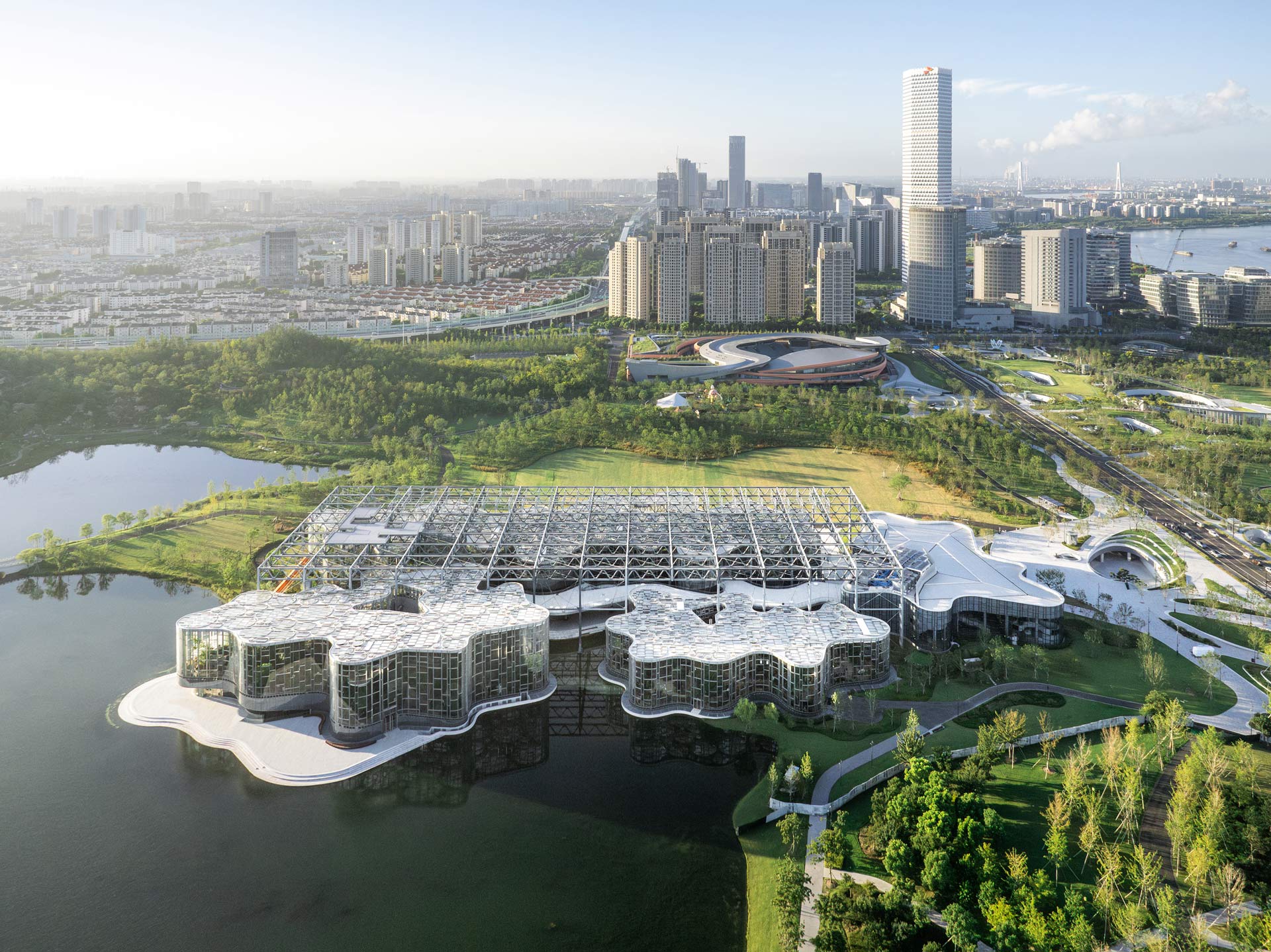Expo Cultural Park Greenhouse Garden, Shanghai, Chine

Shanghai, one of the largest cities in the world, is located in the estuary of the Yangtze River in a subtropical climate. The four seasons there are similar to those in southern Europe. Spring and autumn are pleasantly warm, while summer is hot to very hot and humid. Winter is described as moderately cold, with occasional frost. To create a desert and a tropical climate, air conditioning was originally planned for the greenhouses.
Double thermal glazing was envisioned to limit the enormous energy expenditure. Such glazing has the major disadvantage of losing a lot of irradiation, which might have to be compensated for with artificial light so the plants can thrive, as the intended plants are from climatic zones that offer a great deal of light: The greenhouses in this project are intended to house a desert, a tropical rainforest, and the Cloud Garden.
Another challenge was the architects' fundamental statement: "If we build a greenhouse, it has to be a zero-energy greenhouse. We need photovoltaics!" The goal of a zero-energy building is challenging given its use as a greenhouse.
With our simulations, we were able to show that with Shanghai's relatively high average annual temperature, insulating glazing with its low heat losses would save significantly less than the artificial lighting then required for the plants caused by the high cost of energy. The client was therefore persuaded to dispense with thermal glazing, which made the light and elegant facade design possible. As a result, the plants receive maximum sunlight. In addition, the greenhouses are ventilated exclusively by natural means and thus cooled purely passively, which significantly reduces energy requirements. The risk of overheating in summer is prevented by an externally mounted, movable sunshade on the roof glazing.
Photovoltaics are necessary to meet the zero-energy target but cannot be used on the greenhouse roof. For this, the former structure of an industrial wasteland, which is to remain on the property, is used and covered with PV. But even with complete coverage, the area is not sufficient to achieve the targeted energy balance. So the lake would have to be partially covered with PV. For aesthetic reasons, this could be installed as underwater PV, with sufficient area to harvest enough energy with solar modules. It is known from preliminary tests that this is possible without any problems and the losses are low if the modules are installed a few centimeters below the water surface.
















